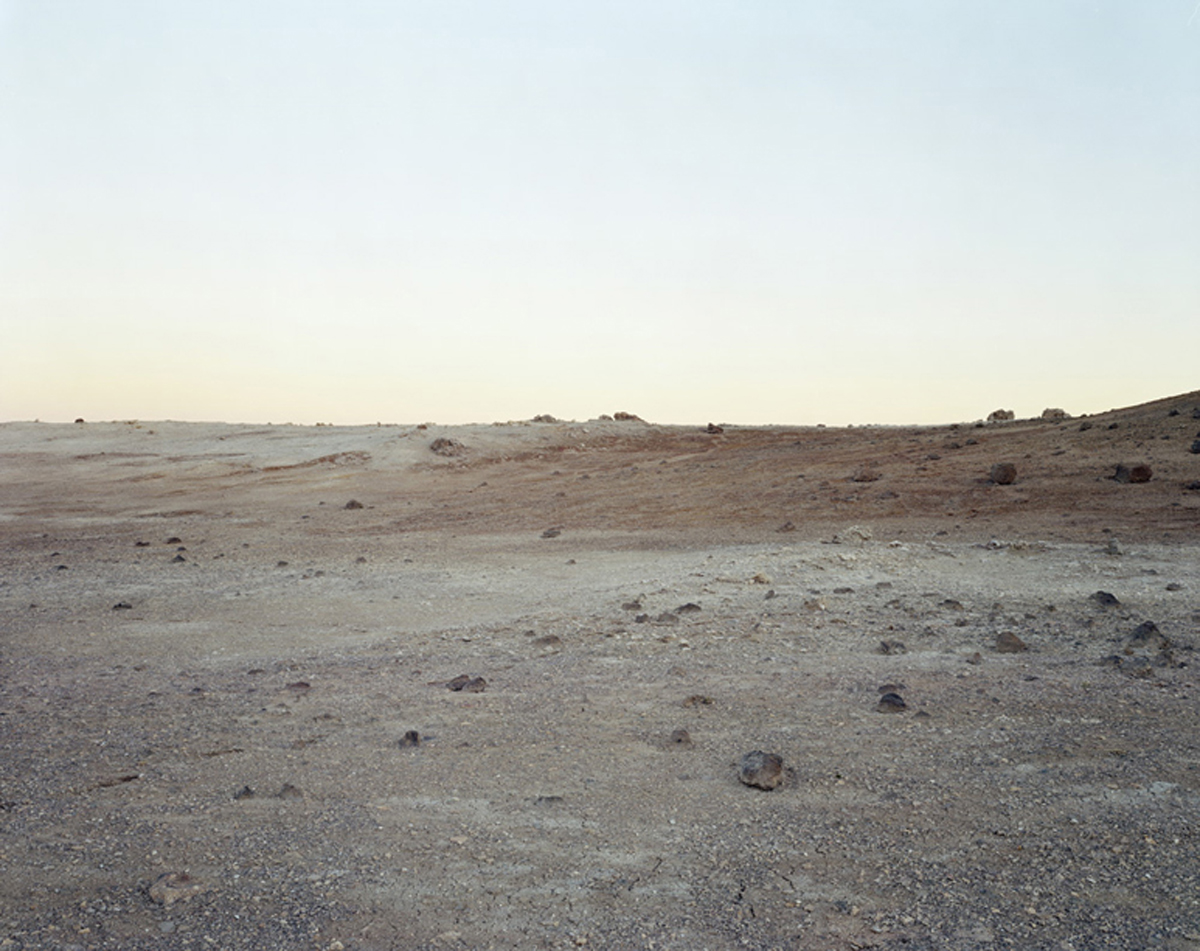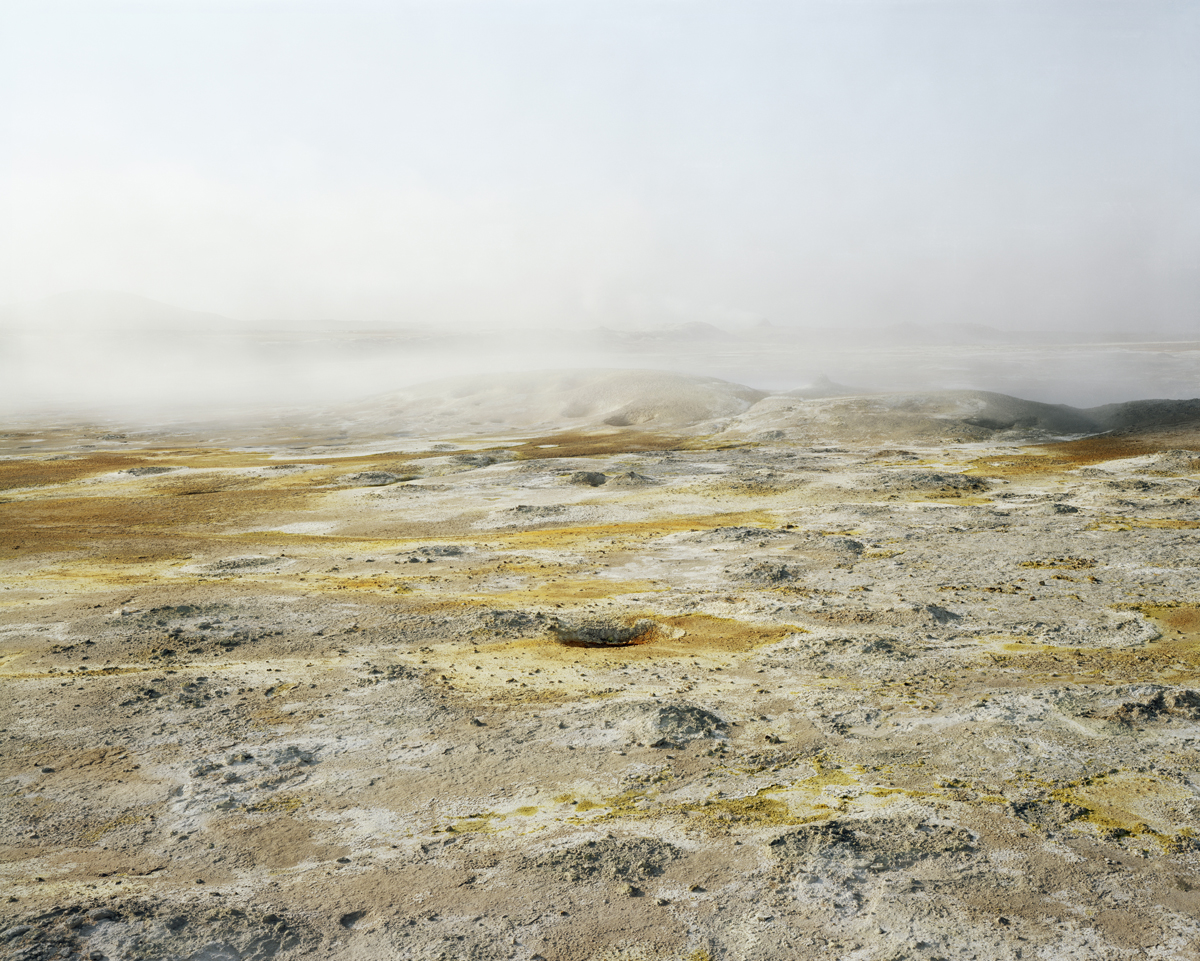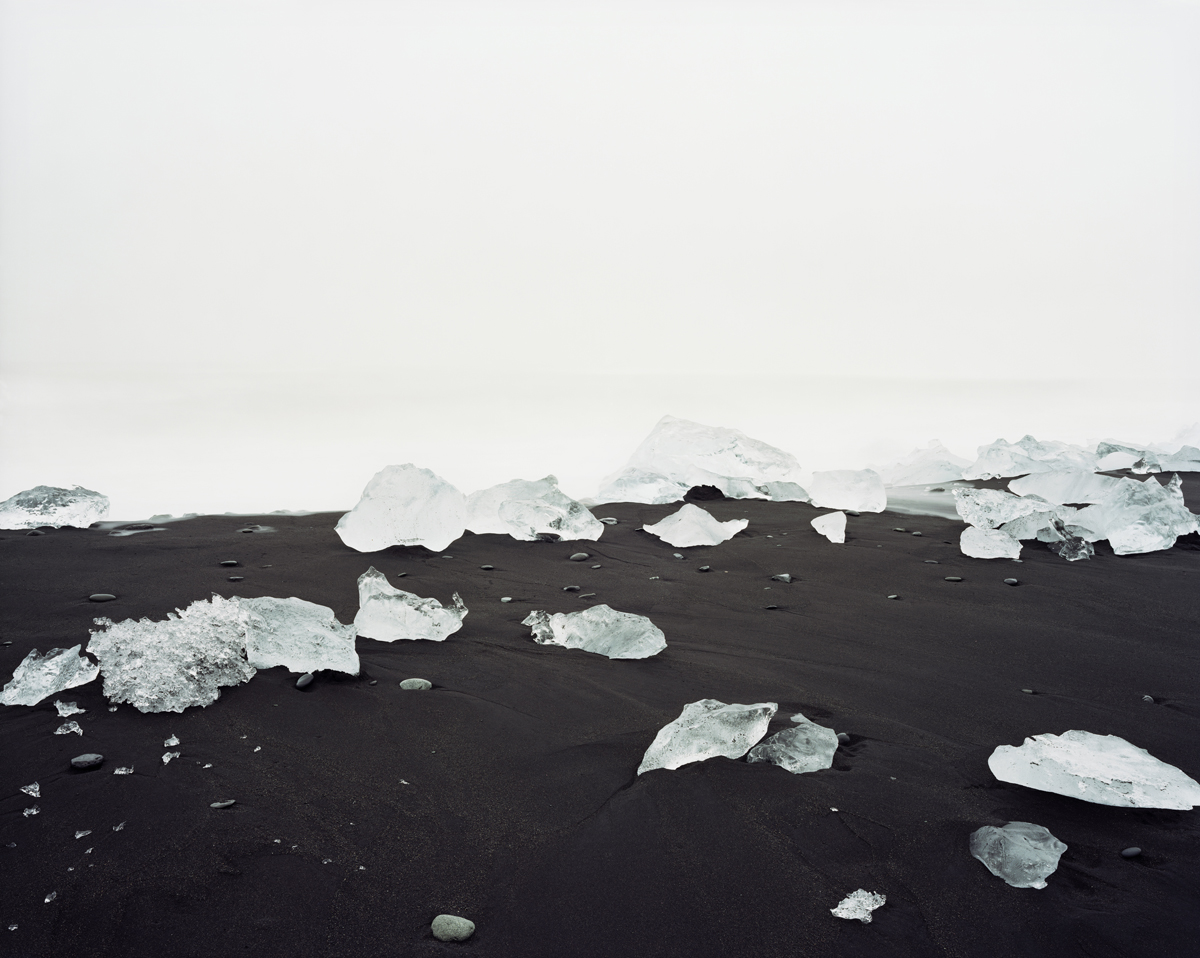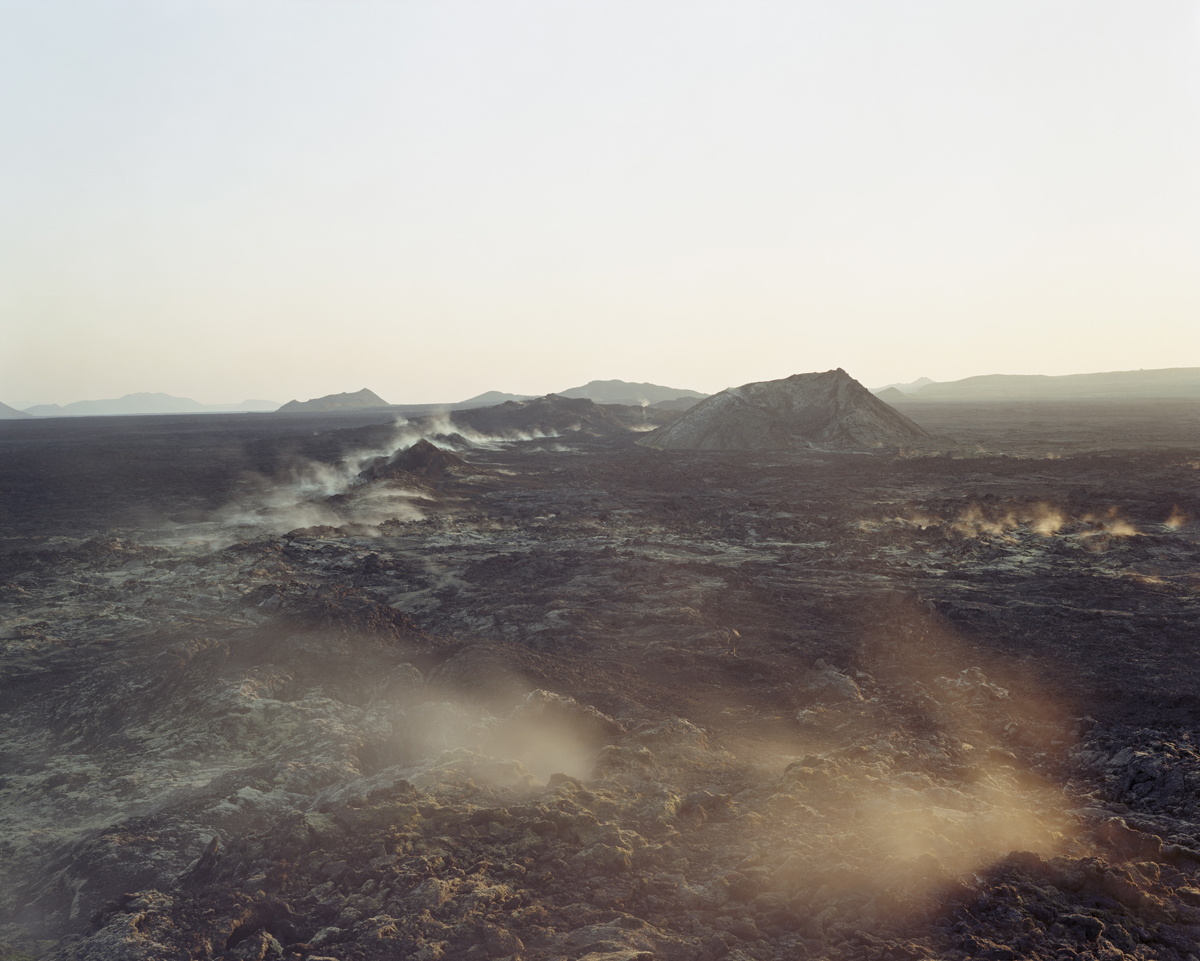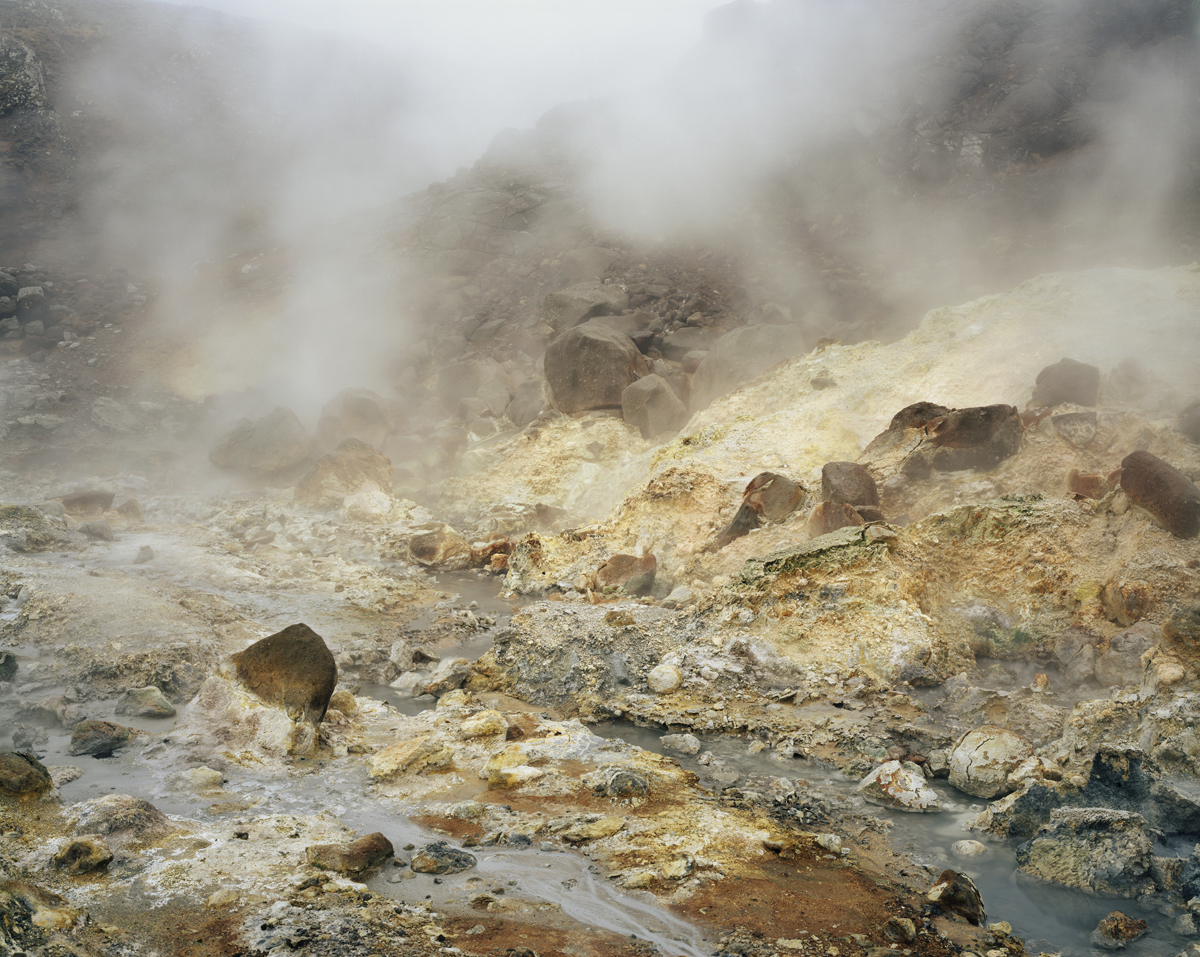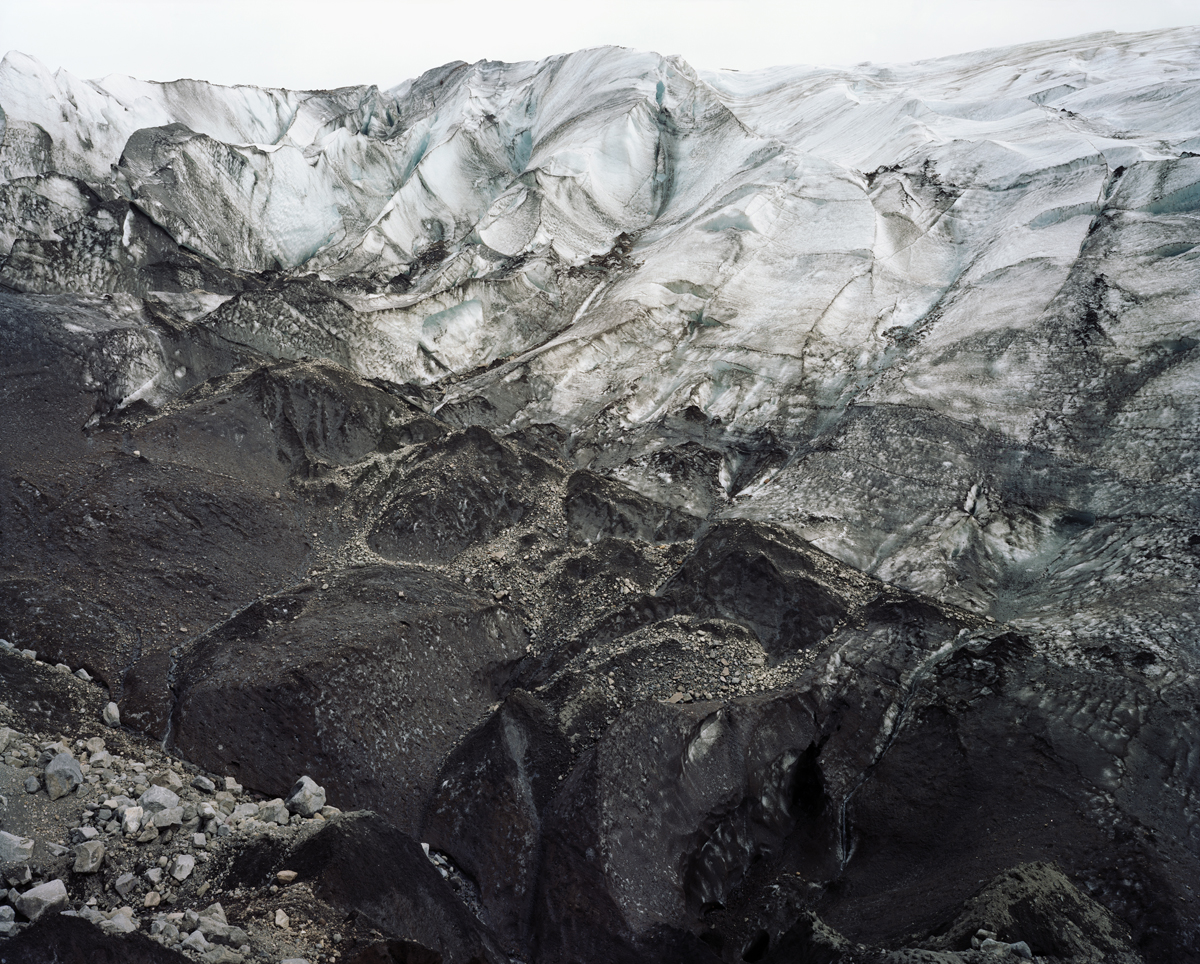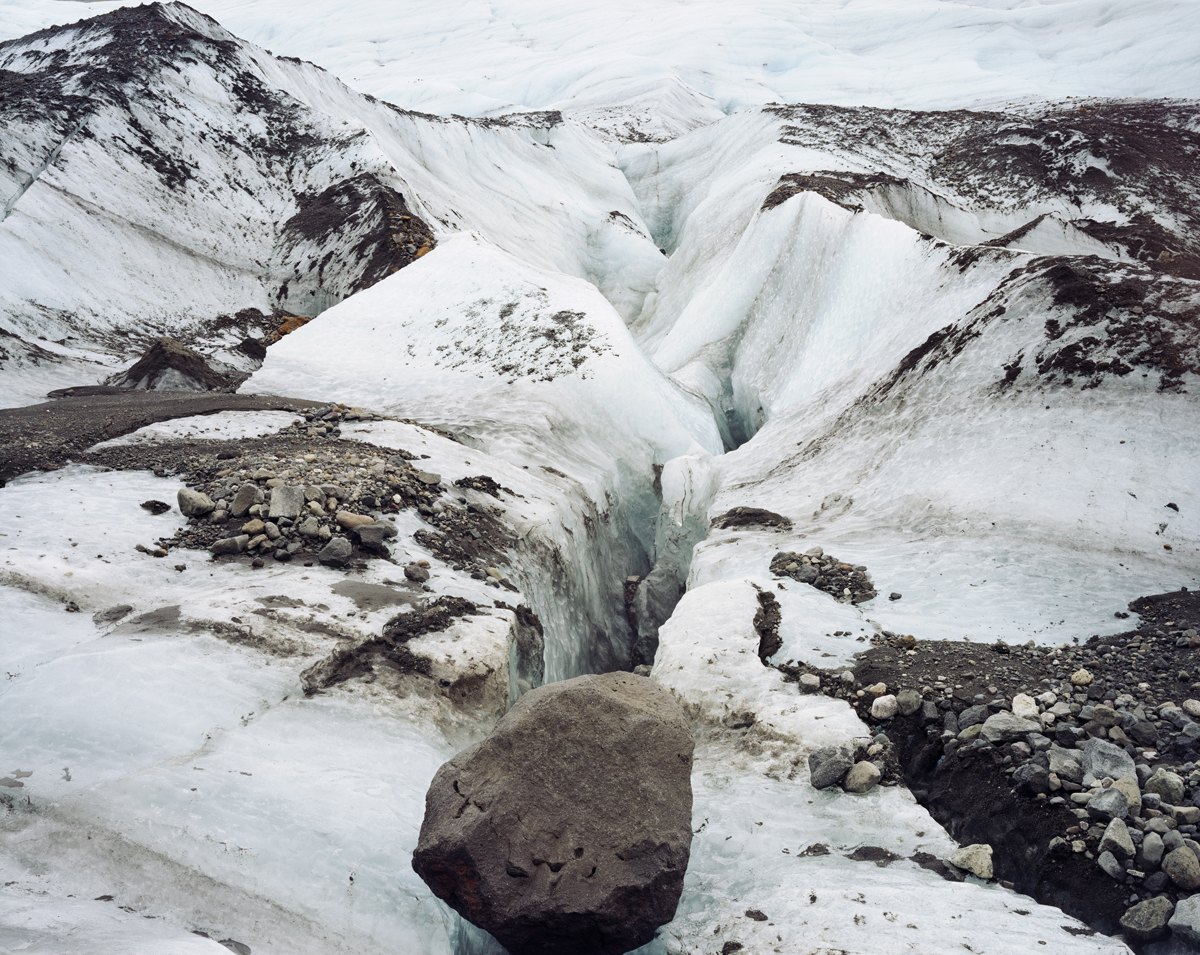Stephen Vaughan
Ultima Thule
March 1 - April 1, 2012
Stephen Vaughan's work explores the connections between geology, archaeology, history, and memory. In "Ultima Thule," the persistent human urge to explore unknown territory is considered within the context of complex geological processes, over vast periods of time, and the formation of the Earth itself.
Shot in Iceland, "Ultima Thule" was initially inspired by the exploratory voyage of Pytheas, in 325 BC, from the Greek colonies of the Mediterranean to the far north Atlantic, beyond the edges of the known world. Vaughan's images of volcanic fissures, shifting tectonic plates, vast glaciers and steaming, sulphurous pools, also connect Pytheas' ancient voyage of discovery to contemporary inter-planetary exploration. They describe landscapes that are the nearest equivalent on Earth to the surfaces of the Moon and Mars, including sites that were used by Apollo astronauts for field training before the first Moon landing.
The potential for discovery or transformation from beneath the surface or beyond the threshold is a central theme in much of Vaughan's work. His photographs are concerned, on one level, with the scrutiny of natural phenomena and, on another level, with the landscape as a site of encounter and revelation. "Ultima Thule" is a study of some of the rawest and youngest surfaces on Earth. Vaughan's photographs retreat in time to the imagined primordial beginnings of landscape and the formation of the Earth itself, void of any human presence or history.
Stephen Vaughan holds an MA in Photography from the University of Brighton and is currently Lecturer in Photography at Plymouth University. While studying Music & Performing Arts as an undergraduate, Vaughan developed an interest in photographing performers and performances. This led to a 20-year career photographing theatre, opera, dance, and film for companies such as Renaissance Films, Working Title, Opera North, English National Opera, and the Royal Shakespeare Company. Stephen Vaughan's photographs have been widely exhibited in the UK and internationally. His current work engages with other disciplines such as geology, archaeology, and cultural geography. Recent projects, made in Iceland and Japan, have emerged from his interest in the geo-cultural histories of landscapes at the edges of the Earth's tectonic boundaries. "A Catfish Sleeps," began in Japan in 2009 as part of the Pavilion Commissions Awards and continued through the devastation of the 2011 Great Tohoku Earthquake. Vaughan's previous work includes "Opened Landscape: Lindow, Tollund, Grauballe" shown at Blue Sky and nominated for the Santa Fe Prize For Photography in 2005.

